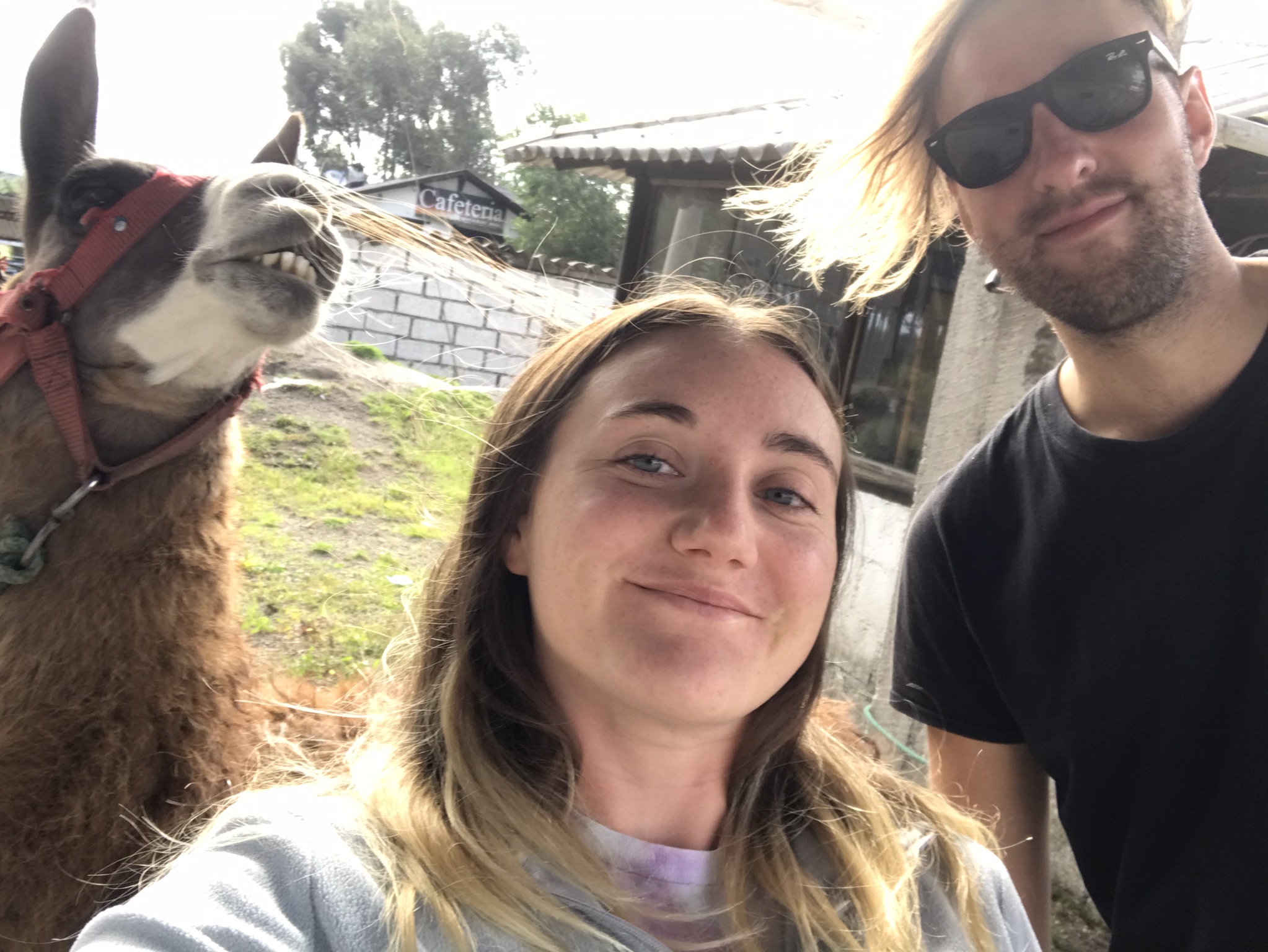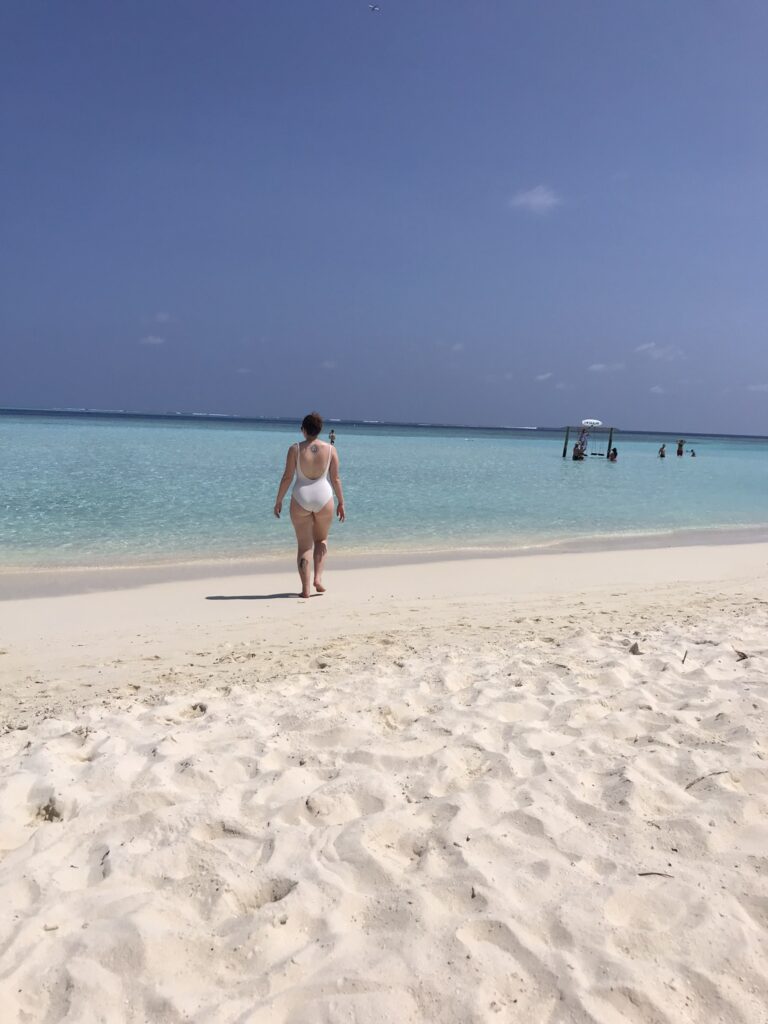
The Maldives on a budget?
Is that even possible you might ask?
Yes is the resounding answer to that!
The Maldives is just like stepping into the pages of a holiday brochure – aquiline tranquil waters, brilliant white beaches, sun pretty much guaranteed. It’s everything you expect and more! Most international flights land at the capital, Malé, but you will need to leave Malé to experience that true Maldivian paradise feeling. The atoll islands surrounding Malé are the ideal location for a ‘beach and chill’ holiday – it’s almost painful returning back to normal life (or for us, traveling through India..) with that blissed out feeling.
Most people think of the Maldives as a high-end, luxury destination with prices to match. And yes, you can choose to splurge on a opulent waterfront bungalow at a 5* resort and dine on caviar and champagne until you’re sick. Or, like us, you can use local transportation, feast on local seafood and stick to a shoestring budget. Contrary to popular belief, the Maldives is a viable destination for travelers of all budgets, even backpackers who want to make the journey for those three precious commodities – sun, sand and sea. The Maldives has so much to offer, you won’t be disappointed!
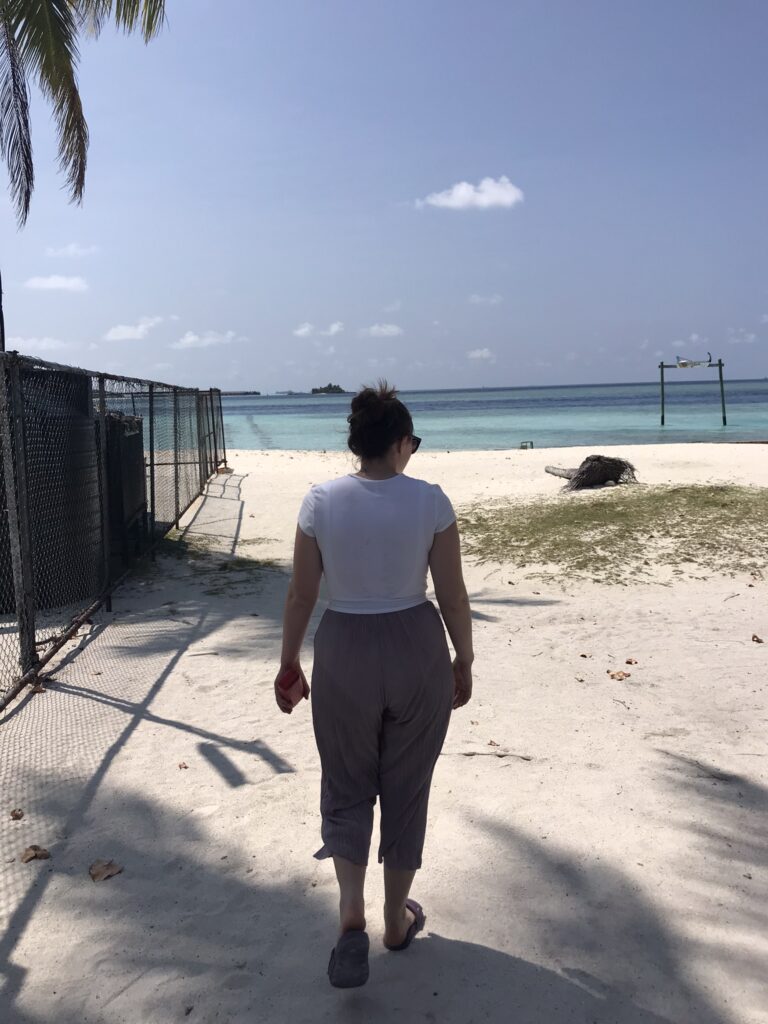
The morning commute to the bikini beach on Gulhi Island
How, you might ask, could you possibly save money in what most people think is a holiday destination reserved for the rich and famous with deep pockets and fancy appetites? I’ve compiled 10 tips below based on my own experiences. We visited the Maldives while transiting to India and found it to be completely affordable by sticking to the following:
1) By far the easiest way to save money is by staying on a local island instead of a resort island. Imprinted on your brain are probably images of the resort islands with luxurious wooden cabins atop crystal blue waters with wooden boardwalks. These are by far the most costly accommodation options in the Maldives. I will admit one perk of staying in these enclosed resorts is that they serve alcohol unlike the local islands. However, recently many of the previously closed-off local islands have opened up for tourists. These islands tend to offer a more local experience with rustic but comfortable accommodation. Additionally, we found on Gulhi island (the local island that we visited) that the restaurants and activities were also reasonably priced when compared with the high-end luxury resorts.
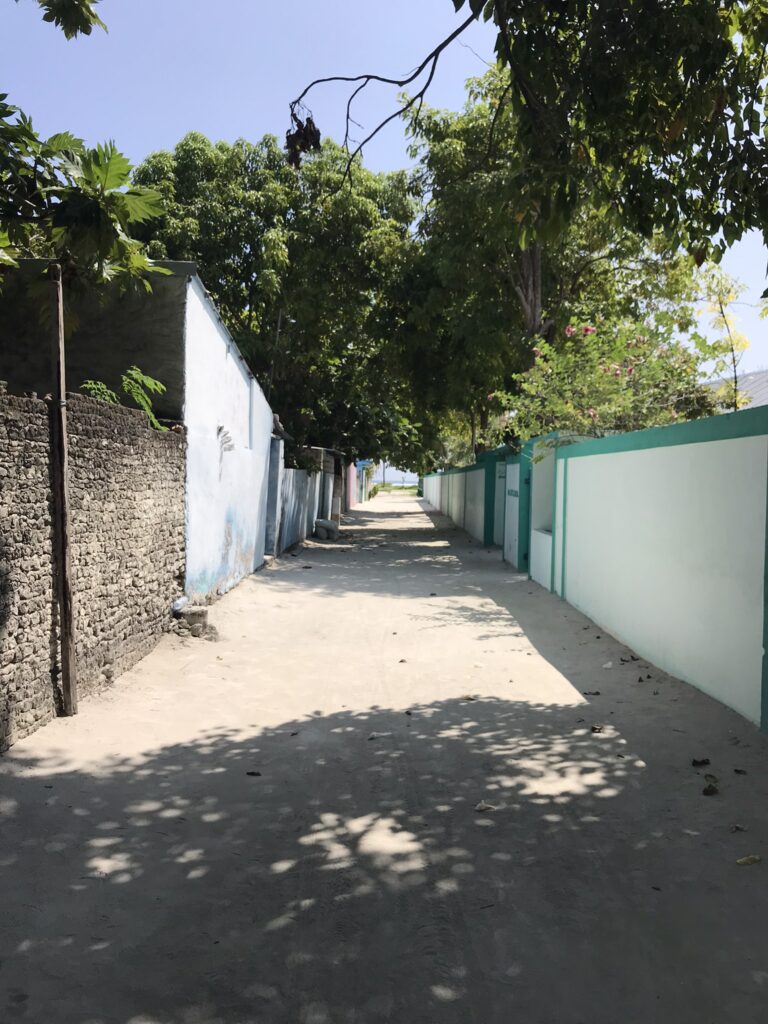
One positive aspect of staying on a local island is that you get to meet locals and spend your money at local businesses like guesthouses, restaurants and shops
Before you book your trip you will need to research which local island you want to visit, be it a single island or more than one in an island-hopping adventure. These islands have varying levels of infrastructure, some are more built up like Maafushi whilst others like Gulhi are quaint and compact.
It’s important to note that you are expected to dress modestly and adhere to the customs of the island whilst staying there. No walking around in a bikini, ladies! There is a designated ‘bikini beach’ for foreigners to flounce around and sunbathe in western swimwear – elsewhere on the island you need to respectfully cover up.
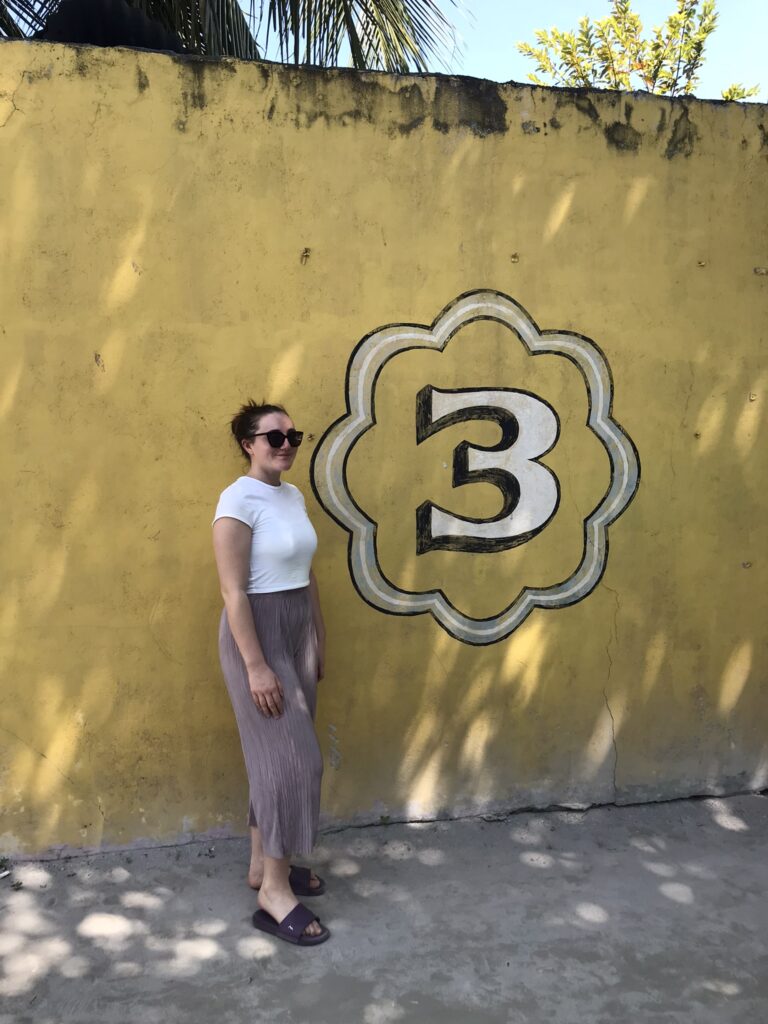
No bikini in sight in the small town of Gulhi
2) Say no to a private transfer from the airport! Did you know that the airport is actually on a separate island from Malé (the capital)? It’s actually on the adjacent island of Hulhule. There’s no need to arrange a private transfer from the airport to Malé city as there’s a regular public ferry which costs around $1 and leaves from just outside the airport terminal at this point and lands here in Malé.
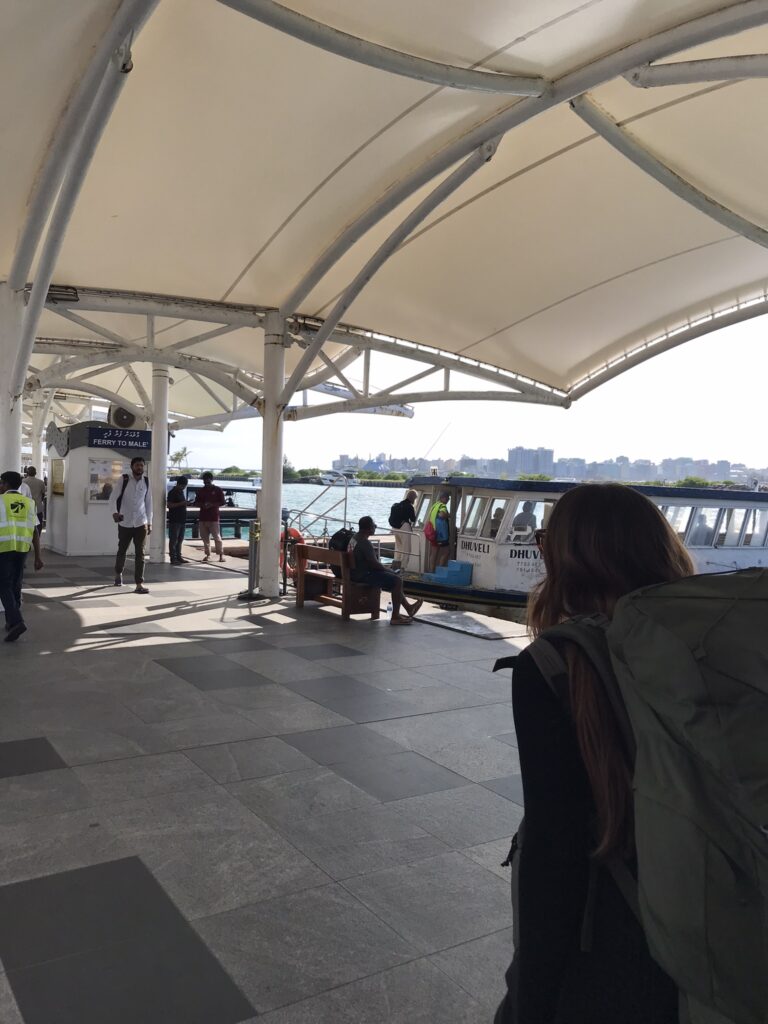
You can buy ferry tickets from this booth just outside the airport
3) Choose local ferries instead of private speed boats. There are four transport options for getting from one island to another: local ferry (cheapest option by far), shared speedboat (more frequent and still a reasonable enough price if the local ferries are not available), private speed boat or seaplane. As you can imagine the latter three options are the most costly. On the local ferry, the journey from Malé to Gulhi cost us 22 rufiyaa or about $1.30, which is way more affordable than a private speedboat ($30 one way). We noticed a large number of tourists leaving Gulhi on the shared speedboat rather than waiting 30 minutes for the local ‘slow’ ferry, which took only slightly longer and cost a tiny fraction of the price. The local ferry from Malé to Gulhi and Maafushi leaves at 3pm from Henveiru Ferry Terminal (in front of Maagiri Hotel) every day except Friday.

Riding the ferry to Gulhi Island
Taking local ferries is also an experience in itself so well-worth the pennies it costs.
4) There are no local ferries on Friday – make sure you take this account when planning your trip. The only exception is the airport ferry from Hulhule to Malé, which still runs although with a reduced schedule on Fridays. If traveling from a local island, you may have to opt for a speedboat or rethink your plans if you find yourself needing to travel on a Friday.
5) Island hopping is possible by using the local ferry, although you would need to plan your route carefully if you want to travel using local ferries. These two websites have the local public ferry timings: Atoll and MTCC. It is important to note that ferries call at different islands similar to bus routes. If you want to go between islands that are not on the same ferry route, you may need to travel back to Malé to transfer, so it may not be possible to reach your destination in a single day.
6) Bring breakfast supplies with you from Malé. Make sure you pick accommodation with a fridge so you can treat yourself to a nice chilled bowl of cereal for breakfast. Eating out three times a day can get really expensive and can become overindulgent when you’re on a budget.
7) Eat local cuisine rather than imported food. You can’t visit the Maldives without trying the Maldivian breakfast, Mas Huni, which consists of shredded tuna, grated coconut, red onion, and chili, typically eaten with Maldivian flatbread (chapati). Other local cuisine to be on the lookout for is fish curry and Garudhiya Soup (clear tuna broth) usually served separately with fish. The Maldivian diet is heavy on fish (such as tuna) and coconut. We discovered that Maldivian food was cheaper than western options so it’s simple: eat local and save money.
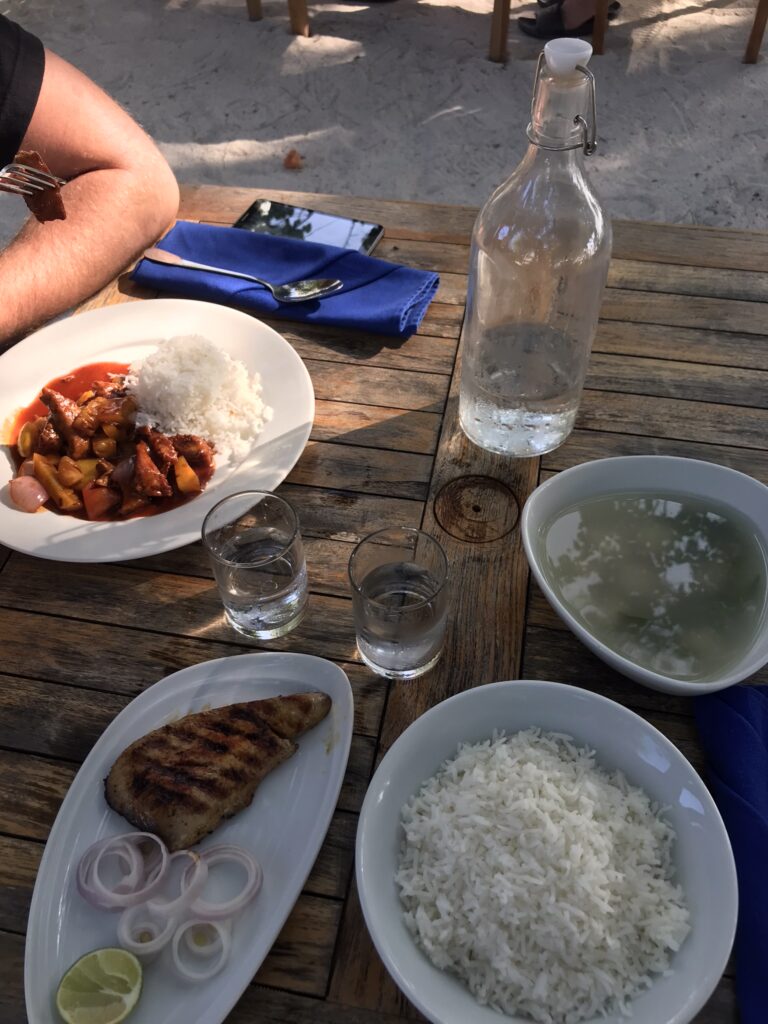
Fish, fish and more fish at Benha Restaurant on Gulhi Island
8) In Malé, you can opt for accommodation with kitchen facilities so you can prepare your own food. The Maldives imports pretty much everything so expect higher prices for food and other products. We opted for an Airbnb with a kitchen in Malé, which was ideal to save money. It’s important to note that the Maldivian government is restricting Airbnbs – our host seemed a bit concerned that we might have trouble at immigration but this didn’t end up happening, however we did provide the details of our other hotel booking on Gulhi island to the immigration officers. I recommend having a booking from a bonafide hotel while passing through immigration just in case.
9) Avoid splurging on expensive trips and activities like diving, as this will cost you. If you do decide to go on a diving trip or boat excursion, use a local provider and shop around. Your guesthouse may be able to help.
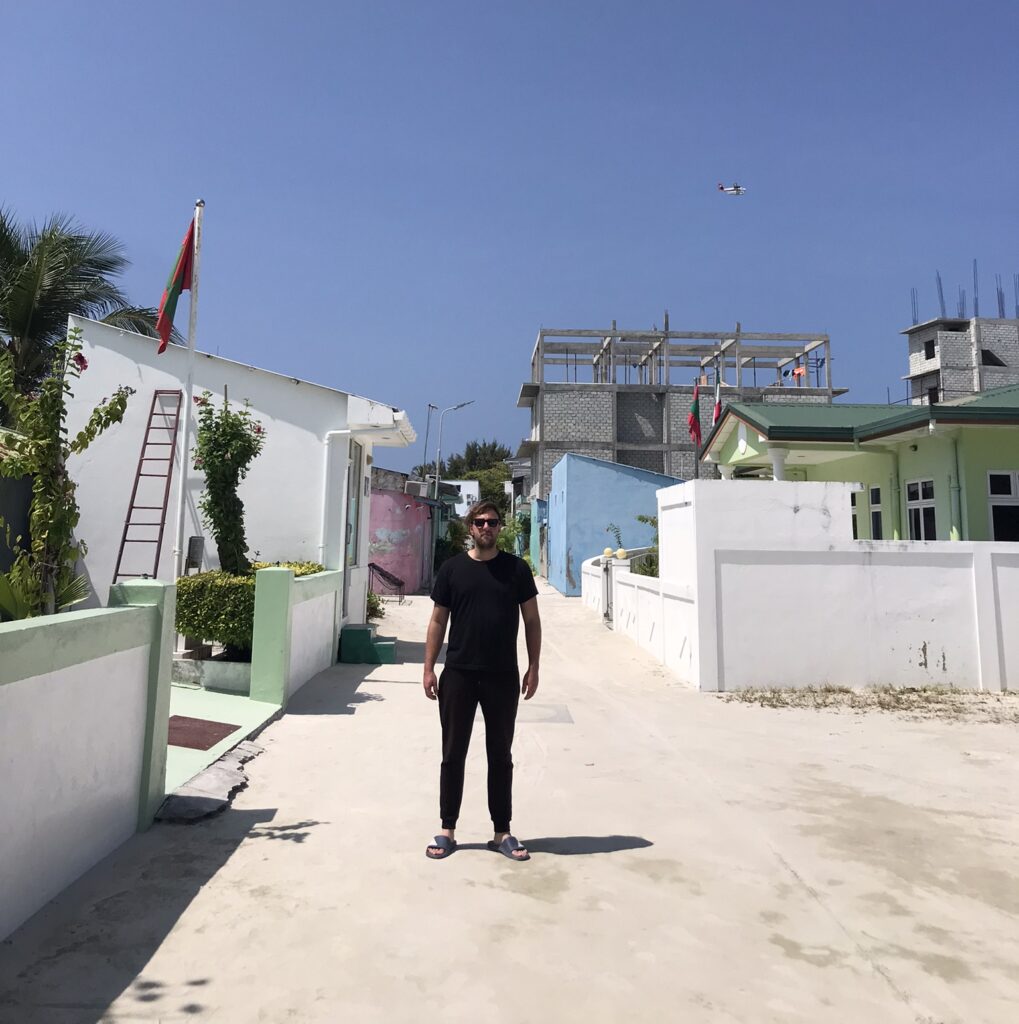
The local islands are quiet and picturesque – this photo was taken on Gulhi
10) If a little luxury is what you’re looking for, opt for a day pass for a resort island – although this might blow your budget, it usually includes all your food and drinks (even alcohol) and transfer, and is much cheaper than staying overnight. Feel like royalty for a fraction of the price!
Entering the Maldives
Before traveling independently to the Maldives, it is important to understand the nature of the country. Did you know that it’s illegal to bring pork products or religious texts to the Maldives? The Maldives is a conservative Muslim country. In Malé, there are more mosques than cocktails! IMPORTANT: Alcohol is not permitted on the main island or any local islands. Don’t expect to roll into Malé and head straight for a bar, it’s not going to happen. Maldivian women dress conservatively with their hair and sometimes face covered. And remember, leave your bible behind!
Immigration form: make sure you complete the IMUGA traveller declaration form before departing for the Maldives. Citizens of most countries entering as tourists are given a free visa on arrival, but you will need to ensure the immigration form is filled in beforehand to avoid any problems.
And finally, have a great trip!
For more Maldives content, click here!
